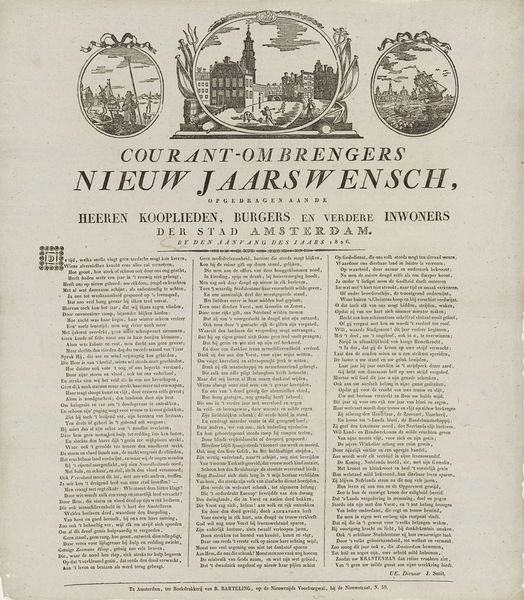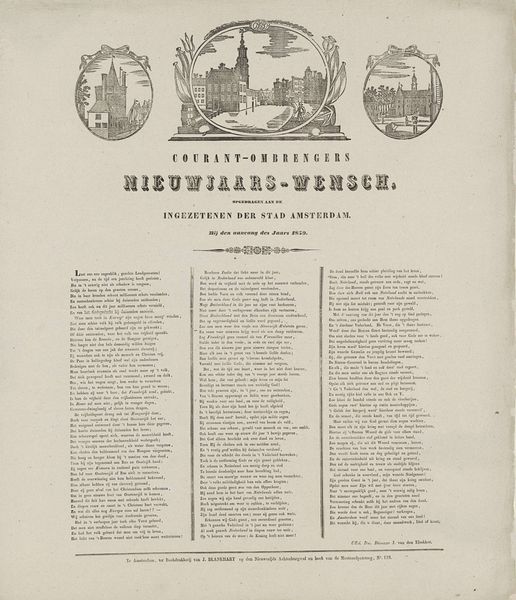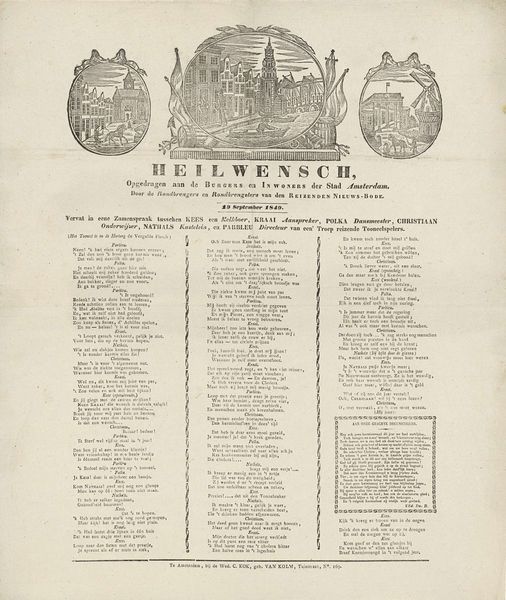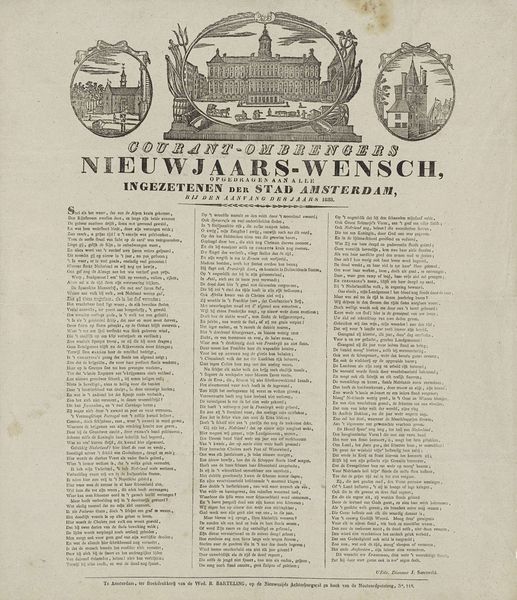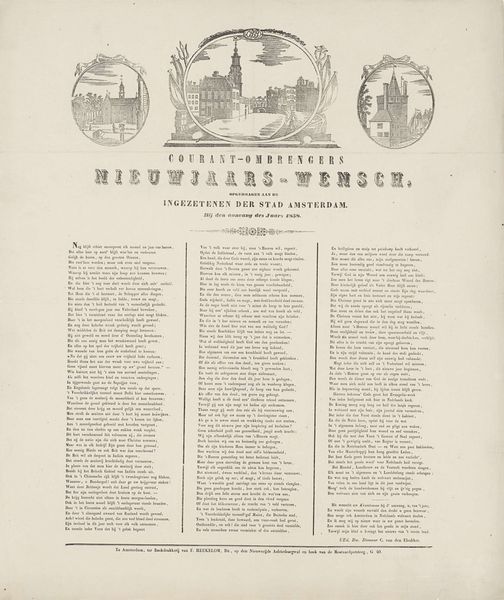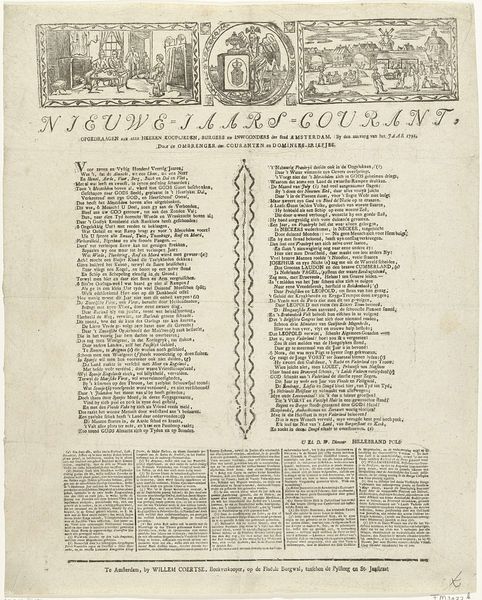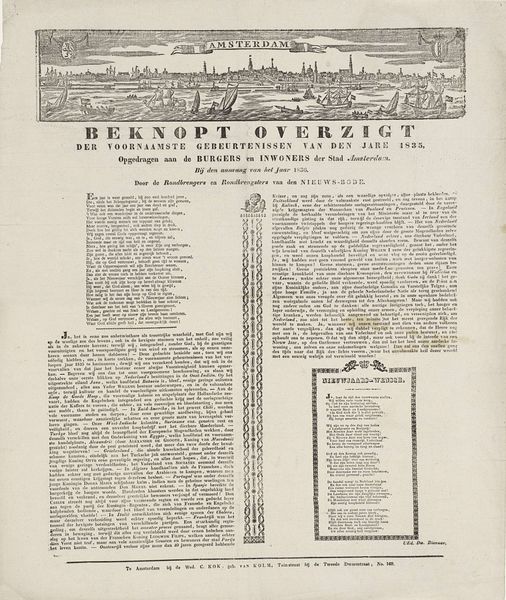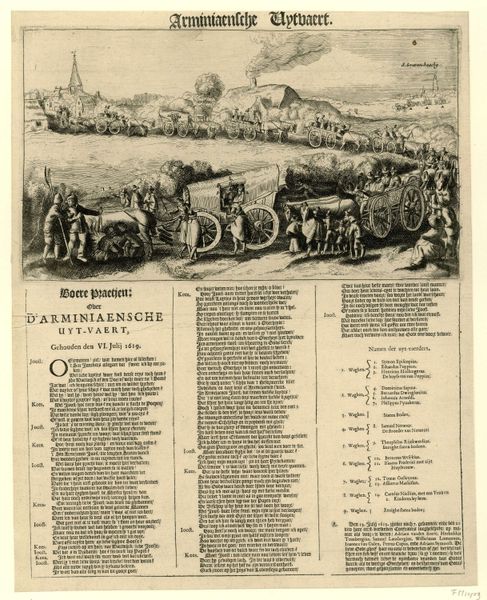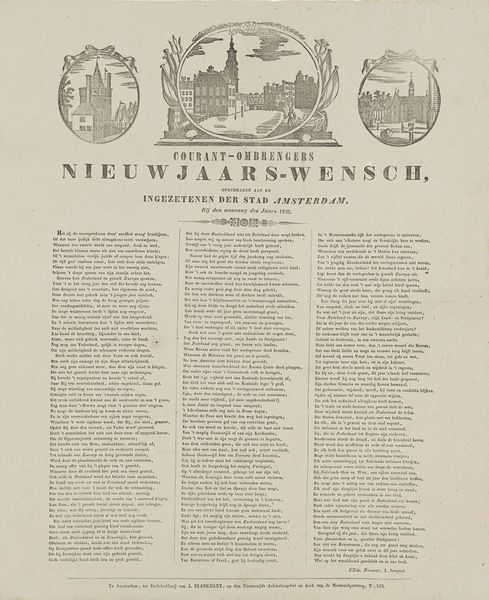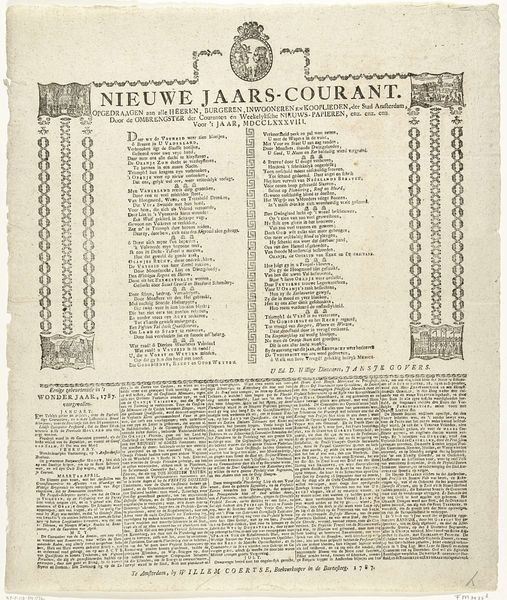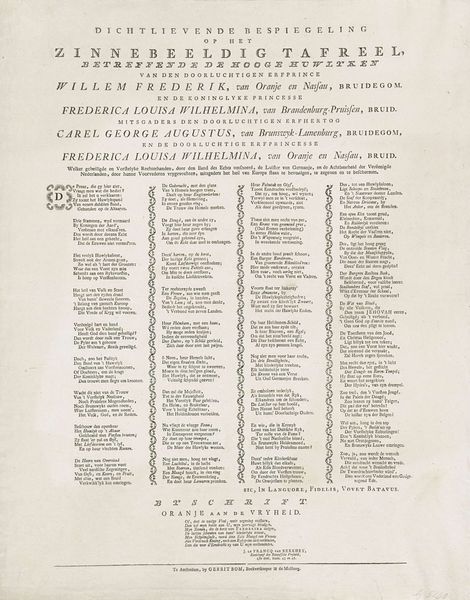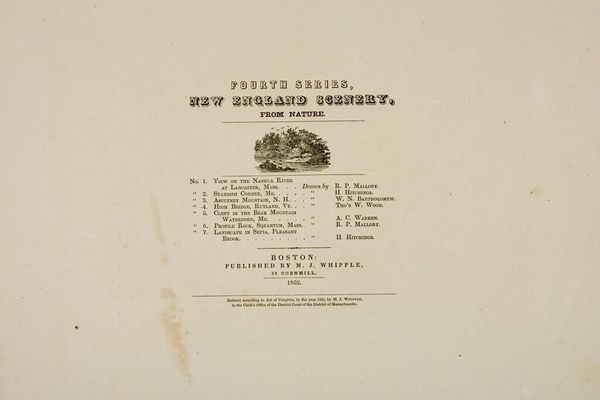
drawing, graphic-art, print, textile, paper, engraving
#
drawing
#
graphic-art
#
dutch-golden-age
#
ship
# print
#
landscape
#
textile
#
paper
#
romanticism
#
cityscape
#
engraving
Dimensions: height 542 mm, width 466 mm
Copyright: Rijks Museum: Open Domain
Curator: What strikes me immediately is the visual density of this print. The composition feels very deliberate in its layering of image and text. Editor: Indeed. This is a New Year's wish from the Amsterdam newspaper carriers for 1832. It’s an engraving on paper. Anonymously created, it showcases a blend of text and small vignettes. Curator: The textual elements take up so much of the overall space, nearly obscuring the pictorial details. Is this purely functional or might the visual rhythm it creates be aesthetically deliberate? Editor: Function definitely plays a huge part. Think of these New Year's prints as a kind of promotional material, almost like elaborate business cards, aiming to ingratiate the carriers with their clientele for the coming year. Curator: So, form follows function here. The three vignettes across the top establish the importance of landscape through careful visual composition and organization. I find my eye bouncing between them, looking at the play of dark and light, and how they contribute to the overall dynamic. Editor: Certainly. Look at the central vignette, the cityscape framed by leafy ornamentation—a classical nod, setting off a depiction of Amsterdam. To its sides are maritime scenes, probably symbolizing Amsterdam's mercantile power. All rendered in delicate engraving. Curator: And notice how these are rendered; the ship and cityscape feel dreamlike or sentimental. The tonal variations are masterfully handled to create a subtle sense of depth. It creates a powerful emotional undercurrent for what otherwise could have been a standard announcement. Editor: Absolutely, the print also reflects broader cultural themes and urban developments, highlighting Amsterdam’s social hierarchy during that period. A document that tells us so much about a very particular moment in the city’s history. Curator: So, ultimately we find harmony in the relationship between practical needs and artistic expression; form serving function, and function allowing the artists to achieve real grace. Editor: And perhaps by understanding that intricate dance we better appreciate the multifaceted role this played for the people of Amsterdam nearly two centuries ago.
Comments
No comments
Be the first to comment and join the conversation on the ultimate creative platform.
